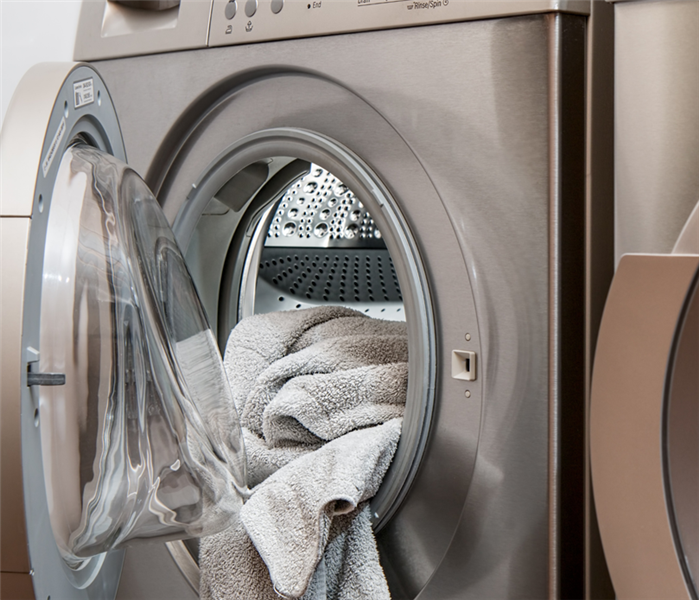Why Is My Washing Machine Leaking?
12/30/2021 (Permalink)
 If you experience water damage in your home from a washing machine, call SERVPRO of Northwest Columbus.
If you experience water damage in your home from a washing machine, call SERVPRO of Northwest Columbus.
Over time, wear and tear on your washing machine can leak to internal problems that can result in water leaks. Here are some common reasons why your washing machine is leaking.
- Overloaded washing machine. Overloading a washing machine is the most common cause for it to leak water. Take a look at your user’s guide for load limits and make sure you’re not putting too much laundry in.
- Excessive suds. Putting in too much detergent can lead to excessive suds that can find their way out of your machine and lead to water damage. Water softeners can sometimes increase your detergent’s ability to produce suds.
- Worn out hose gaskets. If you have an old washing machine, or if you have relocated the machine but used the same hoses, the gaskets in those hoses can become brittle over time and leak.
- Problem with the air gap device. The air gap device stops water from back flowing into your home’s water supply. It can crack causing it to leak.
- The fill hoses to the machine are leaking. Be sure that the hot and cold water fill hoses are tightly connected at both sides of the incoming water lines. After a few years, they will become worn out and crack, likely needing to be replaced.
- Damaged incoming water tube. Once the water makes its way inside the washing machine, it is routed through the air gap device by an internal tube can crack and leak.
- Damaged inlet spout. A significant amount of water can leak out of the machine if the inlet spout is damaged or broken free from the mount.
- Blocked or leaking main drain hose. Inspect the hose leading water into the tub or receiving area. Be sure the hose’s connection to the back of the washing machine is properly secured. Ensure the drain hose is not clogged by disconnecting it and running a long wire through it.
- Cracked utility sink or the pipes are leaking. Check near the gooseneck pipes for punctures, cracks or leaks. If you discover rust or corrosion, that could mean trouble.
- Faulty main tub seal. This is the primary water seal between you washing machine’s outer tub and the transmission that turns the tub. The main seal can sometimes leak directly under the tub.
- Broken water pump. The water pump pushes water from the washing machine’s internal tube out. Inspect the drain hose to ensure it is secured to the pump and look out for signs of a loose hose clamp.
- Faulty water supply valves. Inspect the water supply valves connected to the hot and cold lines to ensure they are working. If you will be away from your home for an extended period of time, turn them off to be safe.
- Back-flow from the sewer. Your washing machine drains directly into the sewer if you don’t have a utility sink. When backflow is an issue, call a professional plumber to look at the issue.




 24/7 Emergency Service
24/7 Emergency Service